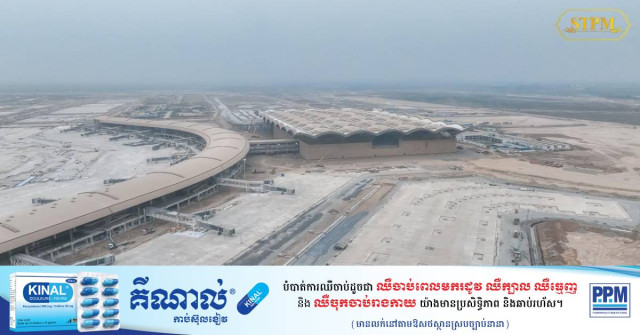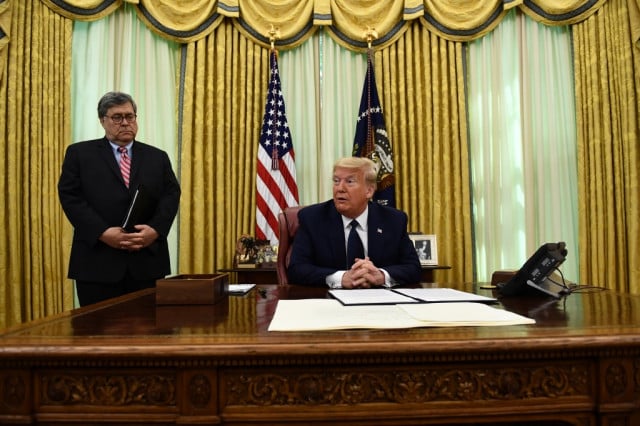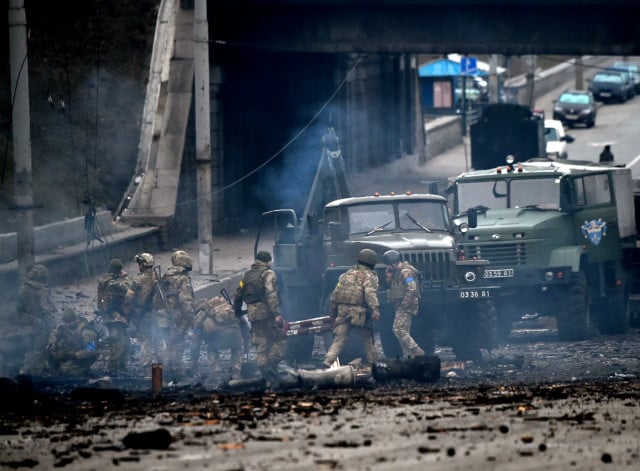New Techo Airport to Attract “Economic Life”: Hun Manet

- By Teng Yalirozy
- March 12, 2024 3:15 PM
PHNOM PENH – Prime Minister Hun Manet deemed the $1.5 billion Techo Takhmao International Airport a new economic hub and a strategy for development in the southwest of the country, once operations kick off in mid-2025.
The new airport, located 20 kilometers south of Phnom Penh's downtown, is being constructed on a 2,600-hectare land and is 65 percent complete as of February 2024. The airport is located across Kandal province’s Stueng district and Takeo province’s Bati district.
Mao Havannall, minister in charge of the State Secretariat of Civil Aviation (SSCA), said that $961 million of the total budget had been spent. The first phase, which will be completed by the end of 2024, aims to welcome 13 million passengers a year from 2020-2030 while the second phase from 2030-2050 is expected to receive 50 million passengers a year.
The new Phnom Penh Airport, a 4F type, will be able to accommodate large aircraft up to Airbus A380-800 and Boeing 747-800. It will be the largest airport in Cambodia, beyond the current standards, said Havannall.
“To reach the successful completion, SSCA appeals to all investors to continue investing,” he said.
On March 12, Prime Minister Hun Manet inspected the construction site, saying he was proud of how far Cambodia had come as a country emerging from decades of war and internal conflict.
“The construction ends; the economic life begins,” he said. “Building a new airport on the landmine-cleared vacant land gives jobs to thousands of workers and creates the historical building, which gives life and activity to Cambodian people from generation to come.”
Hun Manet said the airport was at the center of a strategy to connect the economic activity and development in the southwestern parts of the country, which include the provinces of Kandal, Takeo, Kampot and Kep.
“Techo International Airport is a symbol of Cambodia's progress,” he said. “I dare to brag because it belongs to the Khmer people, on the Khmer territory, that has never existed in history.”
However, the development of such a big facility has been contentious among the local population, who used to use the land to farm. Last year, local residents protested against the airport's construction as a canal that passed through the village was being filled in Ampov Prey village, 6 kilometers from the airport. The authority claimed it was for the drainage system for the airport.
In 2021, earlier protests led to the arrest of over 30 residents with nine being charged with multiple felonies, before being acquitted by a Kandal provincial court.
The project is carried out by an ad-hoc structure, the Cambodia Airport Investment Company (CAIC).
The Cambodian government holds 10 percent of the shares through the SSCA while the remaining 90 percent of the shares are held by the local conglomerate Overseas Cambodian Investment Corporation (OCIC). Most of the funding ($1.1 billion) was supposed to come from a loan granted by the China Development Bank. However, the agreement was revoked in 2021, pushing OCIC to issue bonds to finance the project.
At $1 per square meter, the OCIC started purchasing property from nearby farmers. But the low price was insufficient to convince some of them to go. In the Bati district, 100 households and village heads have asked for higher pay, but their property would be developed into a reservoir.
Prime Minister Hun Manet claimed that the airport is for the collective benefit of the Cambodian people, creating jobs and boosting tourism and economic activities around the area.
“We must be proud. The workers who are building the Techo International Airport must also be proud as they are a part of the construction of this important historical achievement,” he said. “The benefits of this airport will reach people across the country and for decades to come.”
International companies from six different countries take part in the building process, said SSCA Spokesperson Sin Chanserivutha, stressing that there is no exclusivity for Chinese companies. He said companies from Canada, England, France, Singapore, China, Hong Kong and South Korea are involved in the project.















